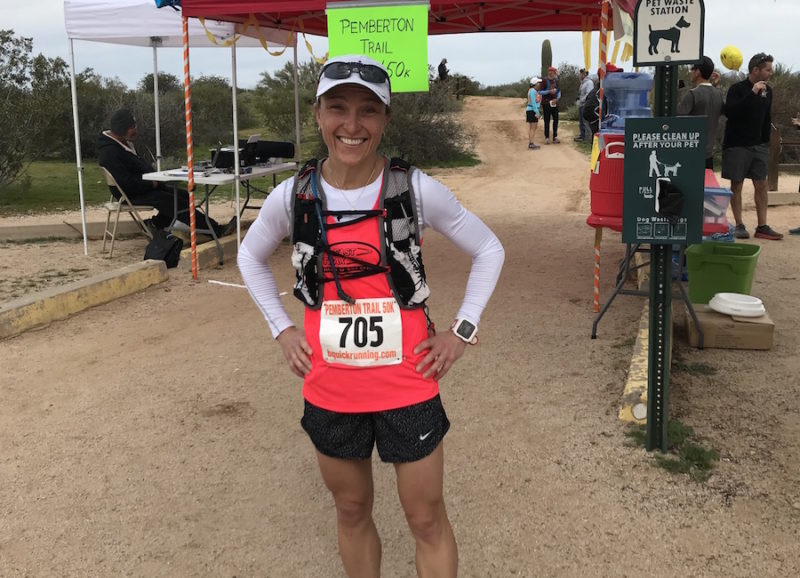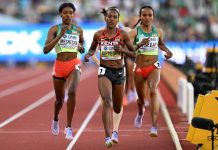At the recent Tarawera Ultra Marathon in New Zealand, 38 year old Alberta based athlete, Ailsa Macdonald, turned a lot of heads, finishing 3rd overall in the 100 mile race, smashing some huge name male athletes. Still working a full-time job, we caught up with Aisla for what is probably her most in-depth interview to date.
RT: Congrats on your recent win at the Tarawera 100 miler. Third overall (men and women), beating big names like Brendan Davies, and winning the women’s race by over 4 hours. Did you have a perfect build-up for this event with uninterrupted training?
AM: My build up was near perfect. I always race well this time of year and typically take a big break in the Fall season in Canada. I started my build for Tarawera in early November and completed a decent 16 weeks of uninterrupted training, luckily avoiding any injuries or ailments. I competed in a couple of training races within that 16 weeks as prep races which I finished well in, which were good confidence boosters. As a result, I felt pretty strong both physically and mentally when I toed the line for Tarawera.
RT: Miles per week during say the 10 weeks leading into Tarawera?
AM: I am a low mileage runner. I do a lot of cross training mostly because I participate in Ironman distance triathlons, as well as road races in addition to ultra trail running. My average weekly mileage is only around 50 miles but my overall training volume is upwards of 18-20 hours, which includes running, cycling, swimming, strength training, and yoga. Before an ultra I do one long run, either a prep race or a solo long run. I like to get in at least an 80km run approximately 3-4 weeks before a 100 miler. This year I ran Bandera 100 km ultra 4 weeks out from Tarawera.
RT: Can you describe how you taper for an event like Tarawera?
AM: I do my last long run (approx 80 kms) 3 weeks out. Two weeks out I will decrease my intensity and volume and one week out, I am just maintaining. I do easy runs or walks to keep my legs fresh. I get lots of sleep, try and do yoga and get a massage a few days before to work out any misalignments or kinks.
RT: What is next on the calender?
AM: Western States. I won a Golden Ticket at Bandera 100km. I ran Western States in 2018 and made a few rookie mistakes and blew it. I’m excited to have another chance to tackle the course again – this time more intelligently. I have a few other races before Western that I will use as training races but WSER is my next “A” race.
RT: Are you still working? What does a typical work day look like in terms of working the training in around it?
AM: I am a Plant Operator at an Crude Oil Production Facility in the Canadian Oil Sands and work in a remote location in Northern Alberta. It’s a Camp job, where I stay on site during my work shift. The schedule is 10 days on, 10 days off with 12hr shifts, alternating days and nights each work rotation. The camp has a great gym which is where I do the majority of my runs on the treadmill during the winter months. During the summer months I run outside which consist of 1 km laps around the camp. When working day shifts, I get up at 3 am to get my training in before work which starts at 5:30 am. It takes dedication and discipline but I always feel better when I complete my workouts. My 10 days off allows me the time to travel for races or train a lot. At work when my time is limited, I focus on quality workouts. On my days off I focus on volume.
RT: Can you describe a typical week of training day-to-day during a hard training phase?
AM: While at work, I can usually get in 2 solid hours before the start of my shift. This usually consists of a long run with tempo efforts or a hard run with strength intervals mixed in. I also do a lot of stationary cycling workouts. My job itself is also physically demanding. I cover a lot of ground on foot in a 12 hr shift and climb tons of stairs! On my days off, my volume increases. It mainly consists of trail running, long bike rides, yoga and swimming. I plan my training at the beginning of each week and my schedule is very flexible in order to allow for a good work/life balance.
RT: Sponsors?
AM: I am sponsored by Saucony Canada and Fast Trax Run and Ski Shop – our local run store in Edmonton Alberta.
RT: Race you most wish to win?
AM: Western States or UTMB! But winning any race is a great feeling and winning Tarawera was pretty phenomenal!
RT: What did your nutrition plan look like, once again using Tarawera as an example? What did you eat/drink, how often etc.
AM: I fuel exactly the same for every ultra and Ironman. Peanut Butter/banana sandwiches, chips and candy. For fluids, I use a diluted electrolyte drink (usually Gatorade), once I am about half way through the course I will start taking in coke at aid stations (I used Ginger Beer in Tarawera which I really enjoyed). I usually down a beer somewhere along the course. At Tarawera I did this at Okatainia aid station(120km). I really enjoy having a beer along the course, especially on hot days. It is so refreshing after drinking sports drinks all day and I always look forward to it.
RT: Diet wise, are you a vegetarian or do you have any specific views on general diet?
I don’t follow any specific diet. I eat a very balanced diet and healthy most of the time.
I do have days where I over indulge – like everyone. I love burgers and beer!
I eat dark chocolate every day and always have a glass or two of red wine with dinner. I don’t believe in restricting any food groups from the diet, unless there is a health reason for doing so. I think as ultra runners, it’s important to get as much as our nutrients and energy from real foods rather than supplements. I have never had any deficiencies and I don’t take supplements so I feel I’ve got it right. Diet is very specific to every individual.
We all have to find what works for us and that can take time.
RT: In the gym, what sort of exercises do you do? Are they mainly injury prevention stuff or specific race related strength work?
In the gym, I do a mix of exercises that focus on strength building, injury prevention and agility (lots of balance work).
When I first decided to get into ultra running I wanted to be able to do the distances without increasing my weekly mileage so I started doing big leg workouts with heavy weights the day before my long runs. This really helped build my leg strength for the terrain and my body adapted to running on tired legs.
My leg workouts consist of deadlifts, squats, wall sits, lunges, kettlebell swings, and lots of plyometric exercises.
I also make sure I work my upper body and especially my core. Ultra running is a full body workout!
I have Achilles tendinitis so I have to be very diligent about staying on top of exercises that strengthen the calves and Achilles. For this I do eccentric and static calf raises, lots of stretching and foam rolling.






























